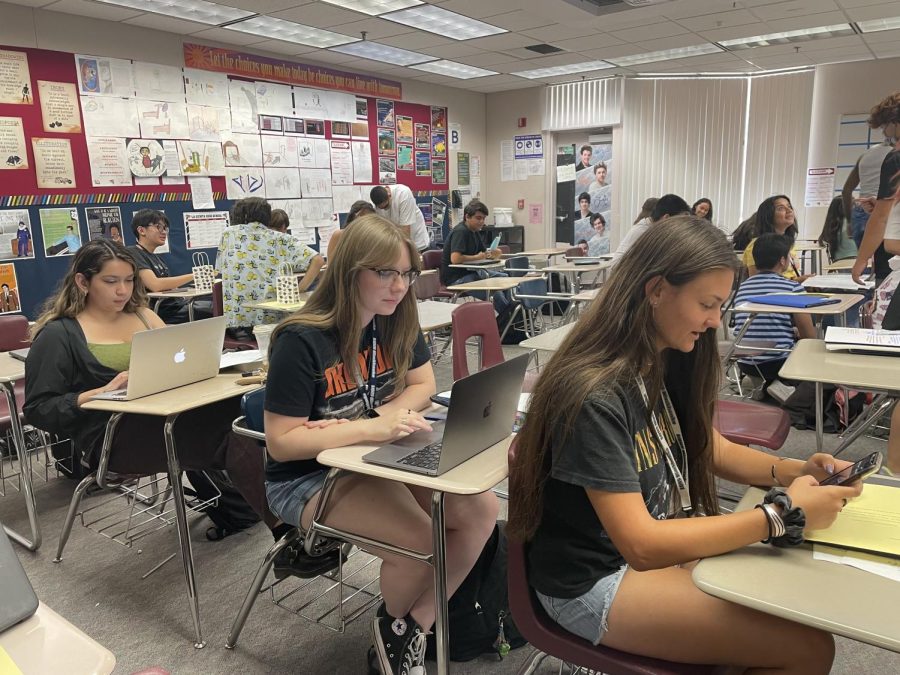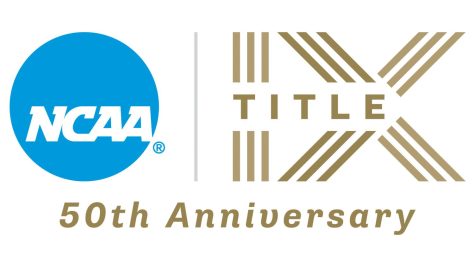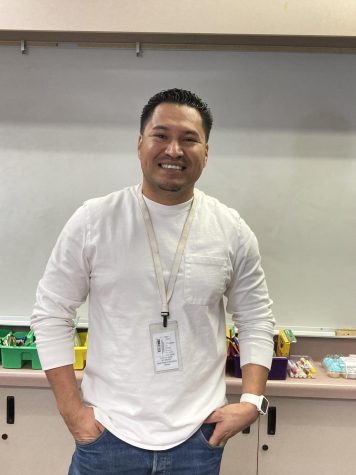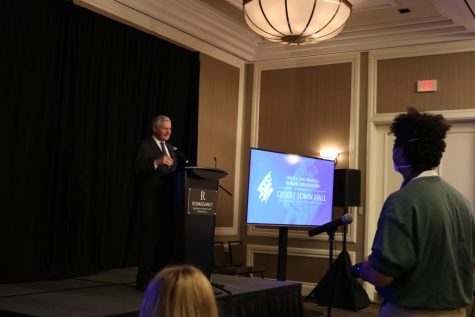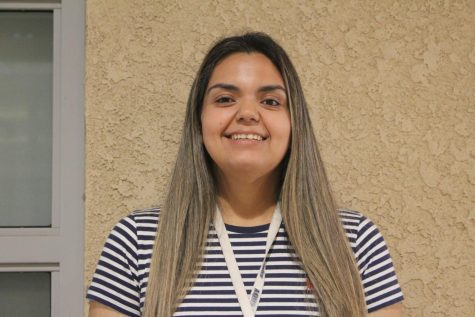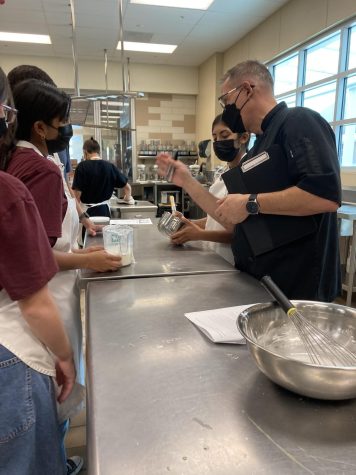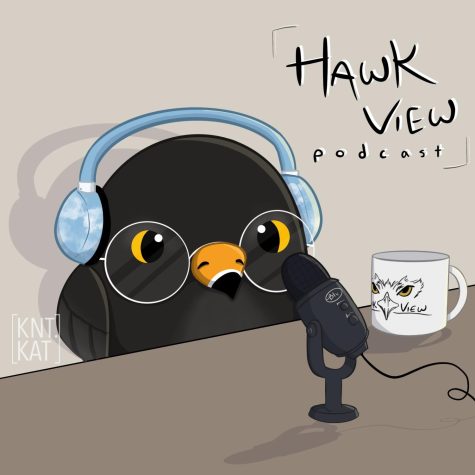How has social media changed?
Kaitlin Gannaway ’22 uses her laptop in class.
Social isolation and quarantine brought on by the COVID-19 pandemic left many searching for ways to spend their time alone, while staying connected to the world around them. The internet, and by extension, social media has become a primary source of interaction and communication since the start of the pandemic.
In 2020, the average time spent on social networking sites by users in the United States increased from 56 to 65 minutes, and has remained steady in the two years since.
But what does this change actually look like for the up-and-coming “Generation Z,” being formed by this evolving digital world, and what are their thoughts on this change?
How did quarantine affect student use of social media?
A Google Form, promoted on social media and among English classes, surveyed students of La Quinta High and found that the most common social media sites used by students at the school include Instagram, TikTok, Twitter and Snapchat.
The majority of students surveyed said they primarily use social media as a way to communicate with others, pass the time and stay in touch with world events.
While at home, however, some students noticed changes in their use of social media and how much time they spent on it.
Denise Moreno ‘24 said, “Quarantine got me trapped. Usually I wouldn’t be on social media for that long, but since I was always home, I was always on it.”
Moreno estimated that she averages a total of four hours a day on social media, outside of school.
Kaitlin Gannaway ‘22, who estimated an average of six hours of social media use a day, agreed that quarantine gave her more time to be on social media.
“This is what allowed me to stay connected to the outside world and maintain my relationships with my friends and family members,” she said.
The shift
Both Moreno and Gannaway said they have noticed changes on the social media platforms they use the most. Most commonly, an influx in activism and educational posts.
“They are always on my ‘For You’ and ‘Discovery’ pages,” Moreno said.
Popular social media sites like TikTok and Instagram have designated “explore” pages where a user can see content from other users that they do not “follow,” that the site curates based on the things users look at and interact with.
Gannaway said she noticed more posts geared towards activism during quarantine. She believes the world was dealing with many controversial topics including the Black Lives Matter movement, LGBTQ+ issues and issues regarding people’s rights to their body.
She said this was most likely due to the fact that during isolation, social media was the “de facto source of connection to the outside world” and the only way for information to spread.
While Gannaway does not think these types of posts are as rampant as they once were, she does think this “sets the precedent for activism on social media which can still be seen today.”
On the La Quinta High campus specifically, Alaura Wiant ‘22 said she has seen social media posts spread quickly for causes like childhood cancer awareness.
Wiant believes social media helps foster camaraderie because “people will post ‘at this game wear this color.’ Just like when we did yellow-outs to support childhood cancer.”
The “yellow-outs” Wiant is referring to is a tradition at LQHS that takes place in October, childhood cancer awareness month. Students are encouraged to wear gold or yellow to a specific football game, the colors for childhood cancer awareness. It shows unity in the student body as they show support for the cause.
The downsides
Evolution of social media and the increase in students using these platforms has also created downsides.
Wiant noticed one negative impact of increased social media use has been a decrease in the attention span of students.
“When we were in middle school everyone was using Youtube. Now everyone uses TikTok and looks at really short clips of people’s lives to be intrigued,” she said.
There is debate over whether or not the pandemic truly affected the average attention span, with some neuroscientists pointing out that the issue may be due to the task at hand, or even the, “sheer volume of content with which we’re presented.”
Some of this increasing content has posed a challenge to the La Quinta High environment.
Amaris Martinez ‘25 remembers seeing posts online earlier in the school year about “a lie going around that someone was going to shoot the school, which made students not come.”
In December 2021, our school was one of many throughout Southern California that found itself flooded with rumors and unfounded school shooting threats.
In reaction to these possible threats, LQ’s administration sent out a letter via email to parents and students debunking rumors and detailing the actions taken by security in lieu of the situation.
The letter stated that no viable threats were uncovered in the investigation by law enforcement, but that the situation served as an example of how students should conduct themselves online.
“Even if these posts are not credible threats, they can cause a great deal of stress and anxiety for our students, families, and staff,” the letter said.
Other popular trends like the TikTok “devious licks” trend have created major disruptions to the school environment, which Wiant feels has created a sense of tension and distrust.
She said due to damaging trends and an increase in online activism, her government class feels very “rigid.”
“We don’t have debates or go into depth about stuff, but I think that that’s a result of social media because you see how polarized everything is. So they don’t want to have fights break out in the classroom because of how tense everything is,” Wiant said.
What is being done in schools?
One answer to help diminish the downsides of social media use in schools has been an increase in media literacy education.
Only 75% of students surveyed said they were familiar with the term “media literacy,” although Wiant said she was aware that it related to communication on social media.
Media literacy is defined as “the ability to access, analyze, evaluate and create media in a variety of forms,” and is used to help educate people about internet usage in regards to the information found on different platforms.
La Quinta High holds an annual “Digital Citizenship” week that provides lessons to students on media literacy and digital citizenship, so they can learn to conduct themselves safely online and avoid false information that could have dangerous effects.
Moving forward
So, do the downsides outweigh the possible good brought about by social media for students? That is a question that can only be answered by each individual on a case-by-case basis.
One thing is clear. Very little, even positive trends, stay around for long. As said by Moreno, “it’s always changing.”
While there have been major changes in the physical world due to the digital one, in the end, social media is just that: a digital platform that is subject to constant change and fluctuation.
Use it however you see fit, and educate yourself and others on using it safely.
Whether you have found peace and freedom or judgment and pitfalls on social media, it is ultimately a tool for life and connection, but not life itself.
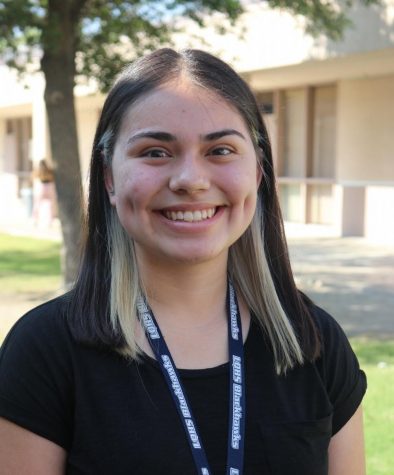
Miranda Muir was editor-in-chief for the 2021-2022 school year. She was a fourth-year Hawkview journalist, an avid dreamer, aspiring world-traveler, and lover of all things creative.

